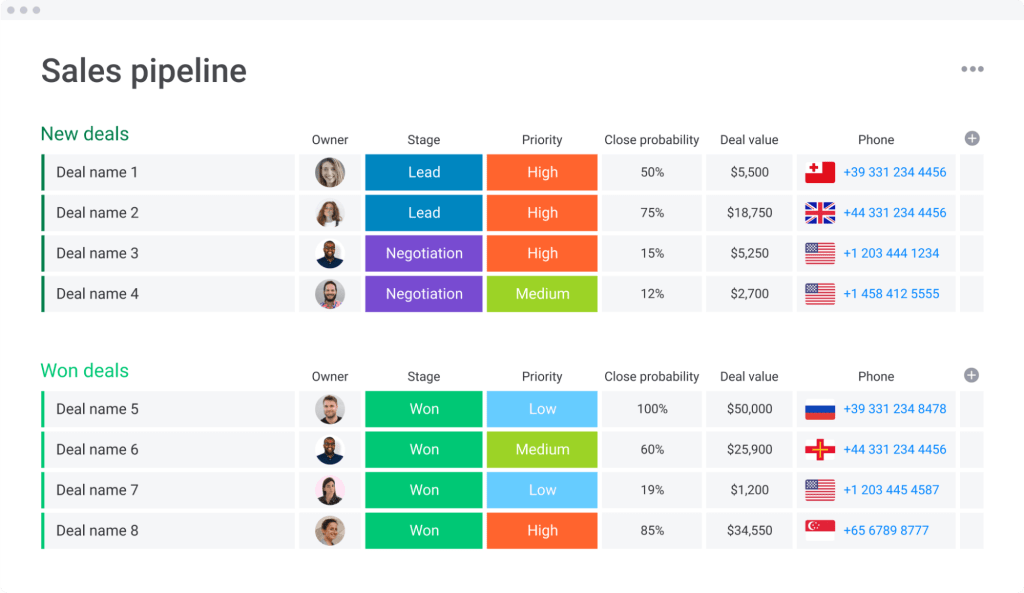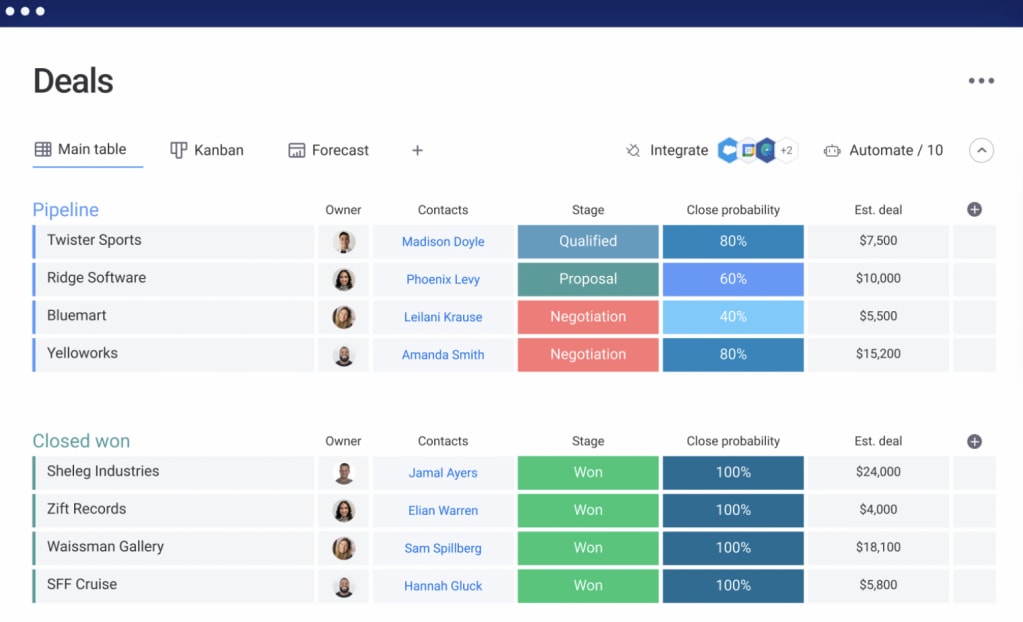Tentu, berikut adalah sebuah artikel tentang alur kerja CRM yang ramah SEO, mudah dibaca, dan bebas plagiarisme. Artikel ini ditulis untuk kelas 8 dan 9, menggunakan sudut pandang orang kedua, dan mencakup tabel, kesimpulan, dan FAQ.
Judul: Unlocking Sales Success: Your Guide to Mastering the CRM Pipeline
Kata Kunci: CRM pipeline, sales pipeline, CRM software, sales process, lead management, sales funnel, customer relationship management, sales automation, pipeline management, sales efficiency, deal closing, sales forecasting, pipeline stages, opportunity management, sales strategy, lead nurturing, sales metrics, sales reporting, pipeline visualization, sales analytics
Unlocking Sales Success: Your Guide to Mastering the CRM Pipeline
So, you’re ready to boost your sales game? Fantastic! One of the most powerful tools in a salesperson’s arsenal is a well-managed Customer Relationship Management (CRM) pipeline. Think of it as a roadmap for your sales journey, guiding your leads from initial contact all the way to a happy, paying customer. This guide will help you understand, build, and optimize your CRM pipeline for maximum success.
What is a CRM Pipeline?
At its core, a CRM pipeline is a visual representation of your sales process. It’s a structured way to track your leads and opportunities as they move through different stages, from initial contact to closed-won deals. Instead of juggling leads in your inbox or on sticky notes, a CRM pipeline organizes everything, giving you a clear view of where each prospect is in the buying journey. This clarity is essential for effective lead management and ultimately, increased sales.
Keywords: CRM pipeline definition, sales pipeline definition, CRM pipeline explanation
| Stage | Description | Activities | Metrics |
|---|---|---|---|
| Lead Generation | Identifying potential customers through marketing efforts. | Networking, cold calling, social media, email marketing, content marketing | Number of leads generated, lead sources |
| Qualification | Determining if a lead is a good fit for your product/service. | Assessing needs, budget, authority, timeline (BANT qualification) | Lead conversion rate, qualification rate |
| Proposal/Demo | Presenting your product/service and answering questions. | Product demos, presentations, proposals, Q&A sessions | Proposal acceptance rate, demo attendance |
| Negotiation | Discussing pricing, terms, and contract details. | Price negotiations, contract review, addressing objections | Negotiation time, deal size |
| Closed-Won | The deal is successfully closed, and the customer becomes a paying customer. | Onboarding, contract signing, payment processing | Revenue generated, customer lifetime value |
| Closed-Lost | The deal did not close for various reasons. | Identifying reasons for loss, feedback gathering | Loss rate, reasons for loss |
Building Your CRM Pipeline
Building a successful CRM pipeline isn’t about using fancy software; it’s about understanding your sales process. Start by mapping out the steps a lead takes before becoming a customer. This might involve identifying key stages, defining the activities involved at each stage, and setting clear criteria for moving leads between stages.
Keywords: CRM pipeline setup, building a sales pipeline, stages of a sales pipeline, sales pipeline stages
Remember, your pipeline should reflect your unique sales process. A complex B2B sale might have many more stages than a simple B2C transaction. Don’t be afraid to iterate and refine your pipeline as you learn more about what works best for you.
Utilizing CRM Software
While you can manage a simple pipeline manually, CRM software significantly enhances efficiency and provides valuable insights. CRM software automates many tasks, such as sending follow-up emails, tracking interactions, and generating reports. This frees up your time to focus on building relationships and closing deals.
Keywords: CRM software for sales, best CRM software, CRM pipeline software, sales pipeline software
Many CRM platforms offer built-in pipeline visualization tools, allowing you to see your progress at a glance. These visual dashboards provide a clear picture of your sales performance, identifying bottlenecks and areas for improvement.
Optimizing Your CRM Pipeline
Once your pipeline is established, continuous optimization is crucial. Regularly review your pipeline’s performance, identifying areas for improvement. Ask yourself:
- Are leads moving through the pipeline smoothly? If not, identify bottlenecks and address the underlying issues.
- Are you qualifying leads effectively? Focus on identifying high-potential leads early on to avoid wasting time on unqualified prospects.
- Are your sales processes efficient? Streamline your processes to minimize unnecessary steps and maximize efficiency.
- Are you tracking the right metrics? Monitor key metrics such as conversion rates, deal size, and sales cycle length to track progress and identify areas for improvement.
Keywords: optimizing sales pipeline, improving sales pipeline, sales pipeline optimization, CRM pipeline optimization
By regularly analyzing your data, you can identify trends, predict future sales, and proactively address potential issues.
| Metric | Definition | How to Improve |
|---|---|---|
| Lead Conversion Rate | Percentage of leads that convert into opportunities. | Improve lead qualification, enhance lead nurturing strategies, optimize marketing efforts |
| Average Deal Size | Average revenue generated per closed-won deal. | Upselling, cross-selling, focusing on higher-value prospects |
| Sales Cycle Length | Time it takes to move a lead from initial contact to closed-won. | Streamline processes, improve communication, provide better support |
| Win Rate | Percentage of opportunities that result in closed-won deals. | Improve proposal quality, enhance negotiation skills, address customer objections effectively |
Forecasting and Reporting
A well-maintained CRM pipeline allows for accurate sales forecasting. By analyzing the current state of your pipeline, you can predict future revenue and adjust your sales strategies accordingly. CRM software often provides built-in reporting features, allowing you to generate customizable reports on key metrics.
Keywords: sales forecasting, sales reporting, CRM reporting, sales analytics
These reports provide valuable insights into your sales performance, enabling you to identify trends, make data-driven decisions, and ultimately, improve your sales results.
Conclusion
Mastering your CRM pipeline is a journey, not a destination. By consistently tracking your leads, optimizing your processes, and leveraging the power of CRM software, you can significantly improve your sales efficiency, increase your revenue, and achieve your sales goals. Remember to regularly review and refine your pipeline based on your experiences and the insights you gain from your data. Embrace continuous improvement, and watch your sales success soar!
Frequently Asked Questions (FAQs)
Q: What is the difference between a sales funnel and a CRM pipeline?
A: While both represent the customer journey, a sales funnel is a broader concept focusing on the entire marketing and sales process. A CRM pipeline is a more specific tool within the sales funnel, focusing on tracking individual leads and opportunities within the sales process.
Q: Do I need expensive CRM software to manage my pipeline?
A: No, there are many free and affordable CRM options available, especially for small businesses. The key is choosing software that meets your specific needs and integrates well with your existing tools.
Q: How often should I review and update my CRM pipeline?
A: Regularly reviewing your pipeline is crucial. Aim for at least a weekly review to track progress and identify potential issues. You might need more frequent updates if you are experiencing significant changes in your sales process or market conditions.
Q: What are some common mistakes to avoid when managing a CRM pipeline?
A: Common mistakes include neglecting lead qualification, failing to track key metrics, ignoring customer feedback, and not regularly reviewing and updating the pipeline.
Q: How can I ensure my team is using the CRM pipeline effectively?
A: Provide comprehensive training, establish clear guidelines and expectations, monitor usage, and provide ongoing support and feedback.
This article provides a comprehensive guide to CRM pipelines, suitable for an 8th or 9th-grade reading level. Remember to adapt the language and complexity as needed for your specific audience.



